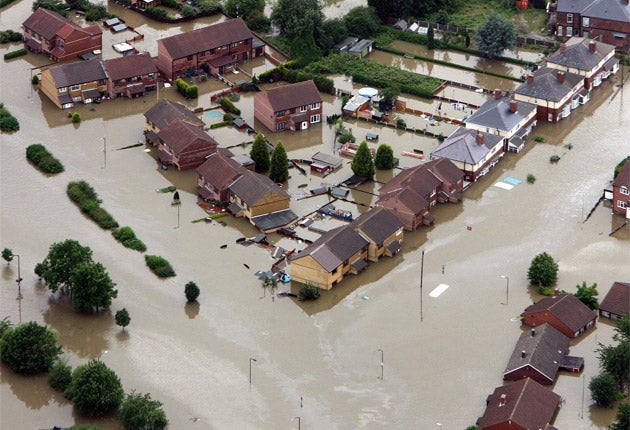UK looks to tropics for help reducing rain storm flood risk
Porous pavements and open drainage ditches among measures identified

Your support helps us to tell the story
From reproductive rights to climate change to Big Tech, The Independent is on the ground when the story is developing. Whether it's investigating the financials of Elon Musk's pro-Trump PAC or producing our latest documentary, 'The A Word', which shines a light on the American women fighting for reproductive rights, we know how important it is to parse out the facts from the messaging.
At such a critical moment in US history, we need reporters on the ground. Your donation allows us to keep sending journalists to speak to both sides of the story.
The Independent is trusted by Americans across the entire political spectrum. And unlike many other quality news outlets, we choose not to lock Americans out of our reporting and analysis with paywalls. We believe quality journalism should be available to everyone, paid for by those who can afford it.
Your support makes all the difference.Open drainage ditches may have to be installed in Britain's towns and cities to help cope with future rainstorms. Flood engineers warn that the existing drainage network of underground pipes is unlikely to be able to deal with the intensity of downpours expected as climate change takes hold, and additional measures will have to be put in place.
These may include porous pavements, underground storage reservoirs beneath car parks and open drainage channels, which are used in tropical cities to cope with storms. Engineers accept that making such major infrastructure changes may be difficult in urban environments, but are concerned at the new phenomenon of "surface water flooding", where a town is inundated not when a river bursts its banks – the traditional cause – but when the rainfall is so great that sewers simply cannot cope.
This happened for the first time in places such as Hull, Doncaster and Sheffield in the downpours of June 2007, during Britain's wettest summer on record.
The report on the floods by Sir Michael Pitt, which was published the following year, said that "perhaps their most significant feature" was the high proportion of surface water flooding compared with flooding from rivers.
Projections for climate change in Britain forecast that rainfall in summer may become less frequent but more intense. Some experts say this pattern is already visible in events such as the flooding at Boscastle in August 2004, when a storm over the Cornish village transformed a stream into a torrent which carried away 50 cars. Similarly, the two downpours of 2007, which hit Yorkshire in June and the Severn valley in July, were probably as heavy as anything Britain has experienced.
Yesterday, a group of the country's leading flood experts spoke about the possibility of installing open drainage channels in towns, ahead of a seminar on flood management in Malaysia, where they are used to handling monsoon downpours. "Go to countries like Malaysia and you will see drainage ditches that go down a couple of metres, so they can store large volumes of water," said Roger Falconer, professor of water management at Cardiff University.
"One advantage of open ditches is that if they're blocked by debris, you can see it there. With a pipe you don't see it as easily, so you just forget it, and then when a storm comes, the pipe is blocked.
"Clearly, our drainage system does not cope with severe storms as it did before 2000. This is a problem facing every city in the UK."
Join our commenting forum
Join thought-provoking conversations, follow other Independent readers and see their replies
0Comments